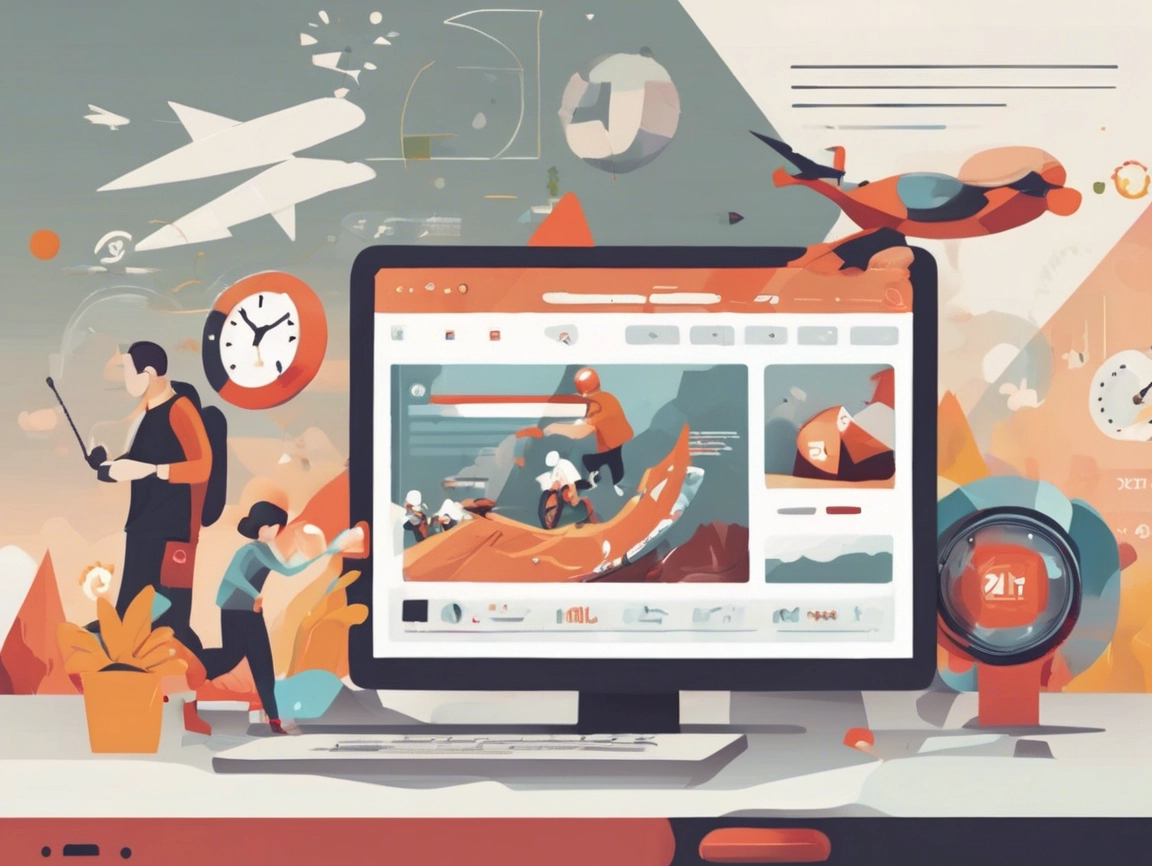Cap Puckhaber, Reno, Nevada
When it comes to optimizing a website, it’s important to understand the key metrics that not only impact user experience but also influence your search engine rankings. In the world of SEO, terms like “pogo sticking,” “bounce rate,” “scroll depth,” and “dwell time” are frequently mentioned. But what do they mean, and why should web designers care about them? Let’s dive into each one and explore how Pogo Sticking, Bounce Rates, and Dwell Time affect SEO and how they relate to web design and SEO. Understanding how the Impact of Pogo Sticking, Bounce Rates, and Dwell Time affects SEO is crucial for improving a website’s performance.
What is Pogo Sticking?
Pogo sticking refers to the behavior of visitors quickly bouncing back and forth between search engine results pages (SERPs) and your website. Essentially, a user clicks on your website link from the search results, but they immediately leave after viewing just a few pages or seconds of content, only to return to the search results and click on another link. This rapid back-and-forth behavior is indicative of a poor user experience, which can negatively affect your SEO. Knowing how the Impact of Pogo Sticking, Bounce Rates, and Dwell Time affects SEO can help in identifying areas for user experience improvement.
From a design perspective, if you have a high pogo sticking rate, it’s a signal that something on your website isn’t meeting the user’s expectations. It could be slow loading speeds, poor usability, irrelevant content, or an overwhelming interface. To reduce pogo sticking, make sure your website is engaging, loads quickly, and provides valuable content that aligns with what users are searching for.
What is Bounce Rate?
Bounce rate is the percentage of visitors who leave your site after viewing just one page, without interacting further. A high bounce rate typically suggests that visitors didn’t find what they were looking for or were unimpressed with the site’s design or content. This is a critical metric for web designers to monitor because it directly impacts user engagement and, subsequently, SEO rankings. Recognizing the Impact of Pogo Sticking, Bounce Rates, and Dwell Time and how they affect SEO can guide strategies to enhance your site’s engagement.
To reduce bounce rates, ensure that your website’s design is intuitive, your content is valuable, and your navigation is clear. Simple design elements like an attractive, easy-to-read layout, compelling calls-to-action (CTAs), and interactive features can help keep visitors on your site longer.
What is Scroll Depth?
Scroll depth measures how far down the page a visitor scrolls. It’s a great way to determine whether users are engaging with your content beyond the fold (the area visible without scrolling). Tracking scroll depth can reveal how much of your content is being consumed. If people aren’t scrolling far, it might indicate that your content or layout isn’t capturing attention effectively.
As a web designer, optimize the placement of important content, CTAs, and images to ensure they appear within the initial viewable area, but also create engaging content that encourages users to scroll further down. Interactive elements like sticky navigation bars, attention-grabbing headlines, and engaging visuals can boost scroll depth.
What is Dwell Time?
Dwell time refers to the amount of time a user spends on your website before returning to the search engine results. While bounce rate captures the action of leaving immediately, dwell time tracks how long someone stays after landing on your page. A longer dwell time indicates that visitors find your content relevant and valuable, which is a positive ranking signal for search engines like Google.
To improve dwell time, focus on creating high-quality, engaging content, using multimedia (like videos, infographics, and interactive elements), and maintaining a clean, well-organized design. Keep in mind that long-form content can also contribute to higher dwell times if it is informative and well-written.
How These Metrics Affect SEO
From an SEO perspective, Google and other search engines use these metrics to assess the quality of a website. High bounce rates, pogo sticking, and low dwell times can signal that your content or user experience isn’t up to par, potentially resulting in lower rankings. On the other hand, a well-designed site that keeps visitors engaged with relevant content can improve these metrics, signaling to search engines that your website is worthy of a higher ranking. Consequently, understanding the Impact of Pogo Sticking, Bounce Rates, and Dwell Time on SEO is essential for any web designer.
By understanding and optimizing for these behaviors, web designers can create websites that not only look great but also enhance user experience, boost engagement, and improve SEO performance.
Conclusion
As a web designer, it’s essential to monitor metrics like bounce rate, pogo sticking, scroll depth, and dwell time to create sites that perform well both in terms of user experience and SEO. By focusing on fast load times, intuitive navigation, engaging content, and design elements that encourage interaction, you can help reduce negative behaviors and boost your website’s visibility and performance in search engines.
More blogs



